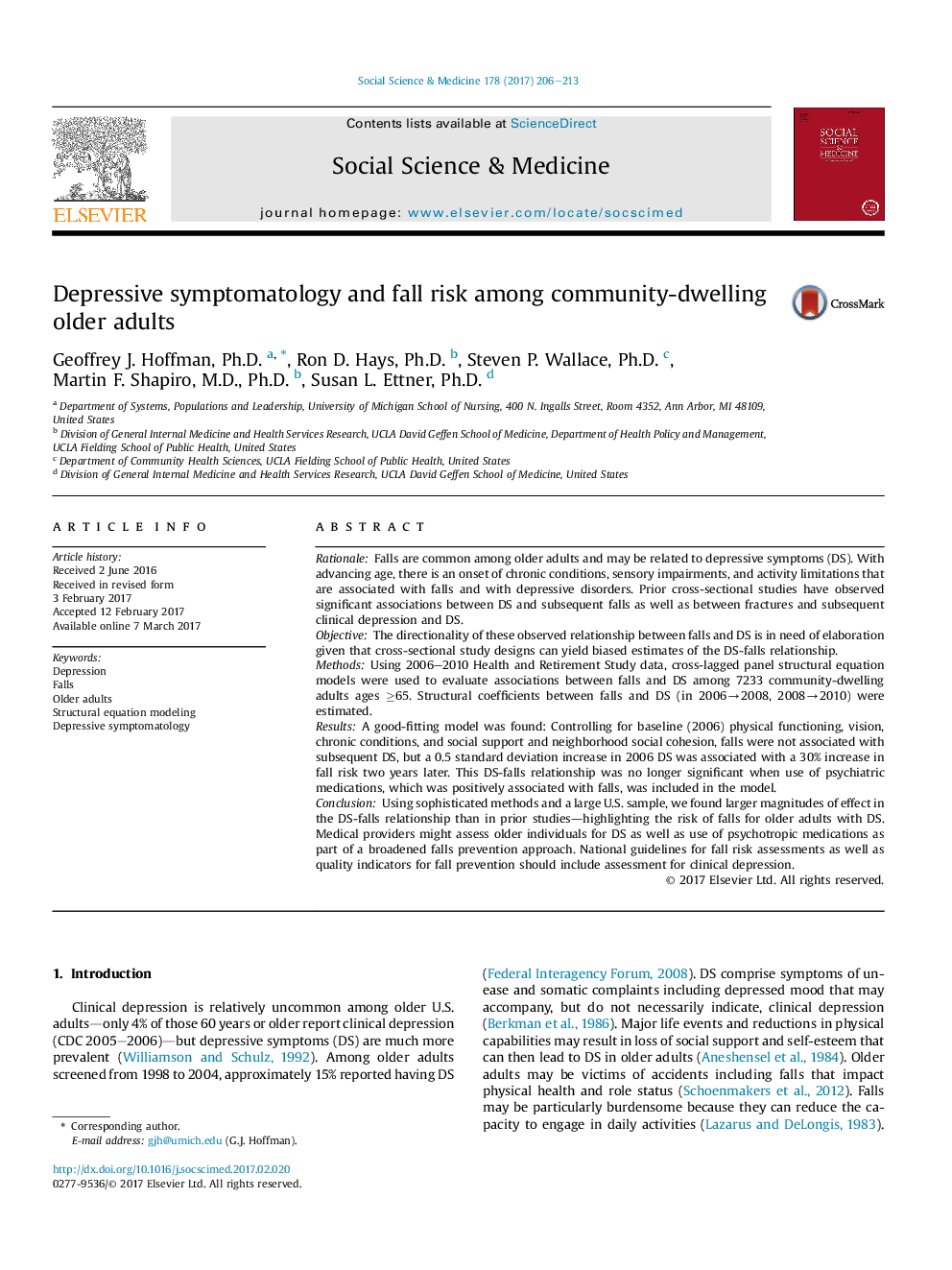| Article ID | Journal | Published Year | Pages | File Type |
|---|---|---|---|---|
| 5046667 | Social Science & Medicine | 2017 | 8 Pages |
â¢We evaluated bi-directional associations between falls and depressive symptoms.â¢Depressive symptoms were associated with increased fall risk.â¢Fall risk was not associated with increased depressive symptoms.â¢Psychiatric medications mediated the depressive symptoms-falls association.
RationaleFalls are common among older adults and may be related to depressive symptoms (DS). With advancing age, there is an onset of chronic conditions, sensory impairments, and activity limitations that are associated with falls and with depressive disorders. Prior cross-sectional studies have observed significant associations between DS and subsequent falls as well as between fractures and subsequent clinical depression and DS.ObjectiveThe directionality of these observed relationship between falls and DS is in need of elaboration given that cross-sectional study designs can yield biased estimates of the DS-falls relationship.MethodsUsing 2006-2010 Health and Retirement Study data, cross-lagged panel structural equation models were used to evaluate associations between falls and DS among 7233 community-dwelling adults ages â¥65. Structural coefficients between falls and DS (in 2006â2008, 2008â2010) were estimated.ResultsA good-fitting model was found: Controlling for baseline (2006) physical functioning, vision, chronic conditions, and social support and neighborhood social cohesion, falls were not associated with subsequent DS, but a 0.5 standard deviation increase in 2006 DS was associated with a 30% increase in fall risk two years later. This DS-falls relationship was no longer significant when use of psychiatric medications, which was positively associated with falls, was included in the model.ConclusionUsing sophisticated methods and a large U.S. sample, we found larger magnitudes of effect in the DS-falls relationship than in prior studies-highlighting the risk of falls for older adults with DS. Medical providers might assess older individuals for DS as well as use of psychotropic medications as part of a broadened falls prevention approach. National guidelines for fall risk assessments as well as quality indicators for fall prevention should include assessment for clinical depression.
